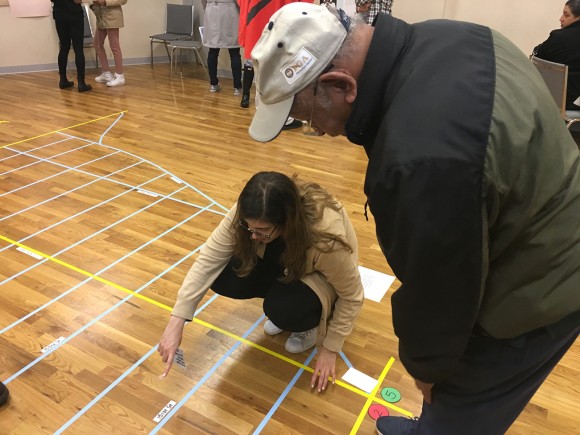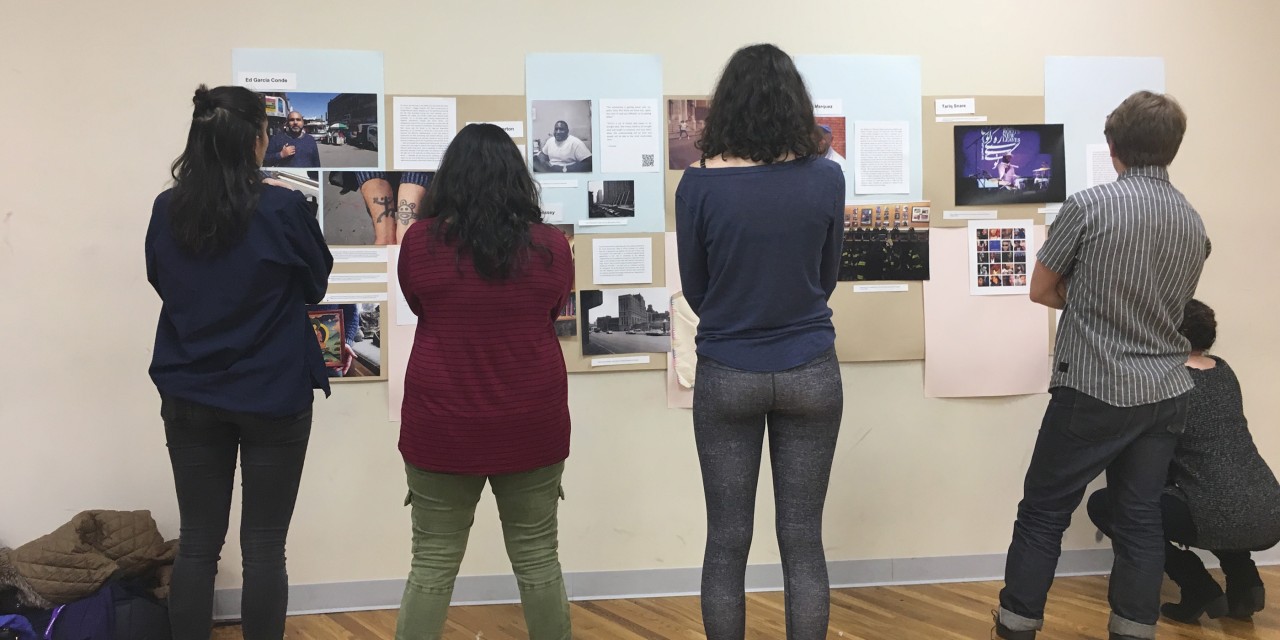(Dis)placed Urban Histories is a project-centered course in which students engage with the past, present, and future of changing neighborhoods in New York City. Led by Rebecca Amato in collaboration with community organizations in New York City, students conduct research in the library, in the archives, and in the community leading to an online archive and a physical exhibition.

“I usually frame it as a community-engaged teaching and learning opportunity,” Amato explains. “The idea is to use history, public history, or the humanities to engage the communities with whom we’re partnering in telling their own stories and then organizing themselves. In general, I think of it as using the humanities for community organizing.”
The course focuses each semester on one changing neighborhood in New York City, most recently the Melrose neighborhood in the South Bronx. Over the course of the semester, students learn about the neighborhood’s complex history. In the 1970s and 1980s, arson displaced many Melrose residents. In their place, Melrose has become home to migrants from Puerto Rico and immigrants from a number of areas including Bangladesh, the Dominican Republic, and West Africa. In Melrose, (Dis)placed Urban Histories has partnered with a community development organization, the Women’s Housing and Economic Development Corporation (WHEDCo).
"New York City for last 10-15 years has been going through a massive rezoning,” Amato says. “It’s been controversial for a lot of reasons, one of which is there is also massive development in the city that is spurring gentrification. The neighborhoods that WHEDCo serves are being reviewed for rezoning. WHEDCo is working to understand the community’s needs so they can offer some input into whether it’s fair or just or serves that community.”
In Melrose, WHEDCo is in the process of developing Bronx Commons, a 426,000 square foot mixed-use development featuring affordable housing, retail, and community space—including the Bronx Music Hall.
As the development progresses, (Dis)placed Urban Histories students are helping WHEDCo learn more about Melrose in order to protect the histories that could be lost as the neighborhood changes.
(Dis)placed Urban Histories students become “activist historians whose objective is to learn what histories are at risk of being silenced or displaced as the South Bronx changes,” Amato explains in the course syllabus. “Students… conduct archival and secondary research; produce collaborative oral histories with neighborhood residents and business owners; and meet with activists who are working to protect the interests of the current community of Melrose.”
Together with WHEDCo organizers, Amato identified people in Melrose who would be interested in participating in an oral history project.
“Each of my 18 students interviewed a person who lives in or works in Melrose now,” Amato says. “The focus of the oral history was partly on life history or life story and partly on the neighborhood and their connection to the neighborhood and any thoughts they may have on changes to the neighborhood.”
Each interview was documented for a digital archive built with Omeka. In addition to recording all the roughly hour-long interviews, students photographed their interviewees and offered the opportunity to digitize items for a community collection. The Omeka archive features all interviews and photographs of the community members and their items, which include records, heirlooms, and photographs. These materials formed the basis of a history-based public exhibition at the end of the semester, at which the students and community came together in Melrose.
